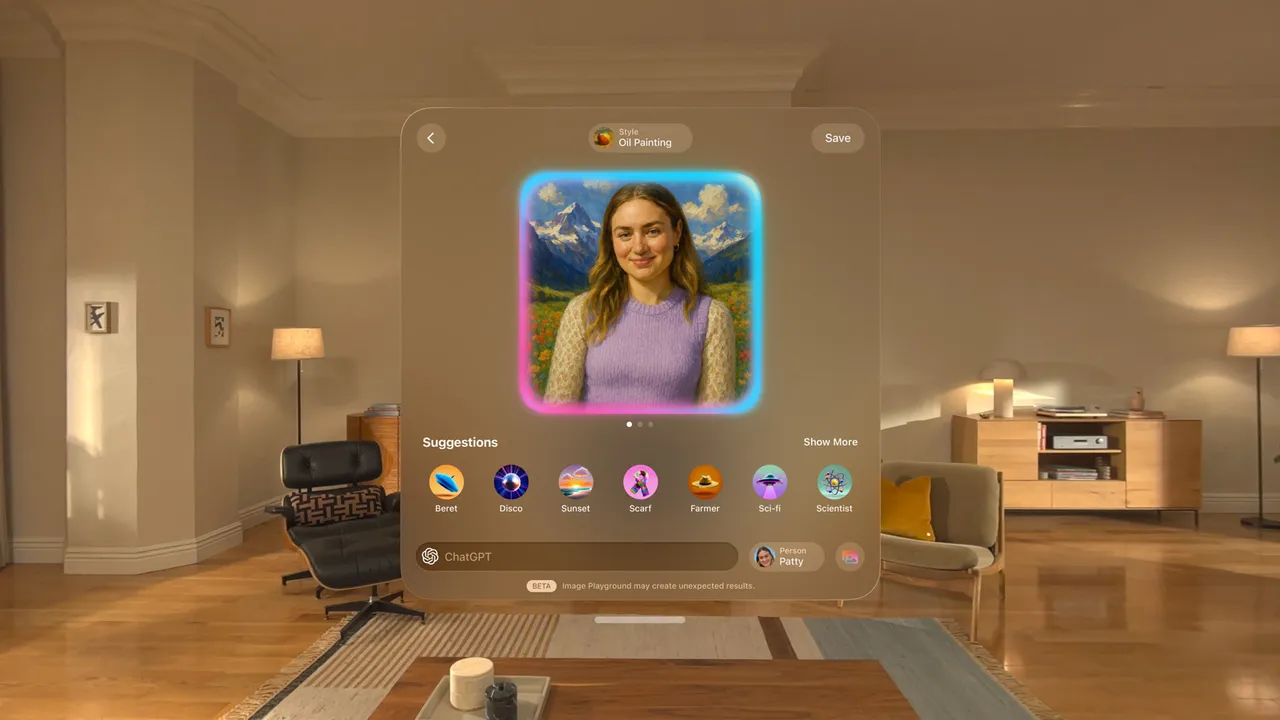Apple is giving its Vision Pro headset a major intelligence boost. With the debut of visionOS 26, generative AI is now baked into the heart of its spatial computing system. From 3D shopping to lifelike avatars, this update hints at Apple’s bigger push into immersive tech powered by machine learning.
Could this finally set the Vision Pro apart in the crowded XR market?
What’s the News?
At WWDC 2025, Apple revealed a significant update to its Vision Pro headset, unveiling visionOS 26, a new operating system powered by generative AI. The announcement reflects Apple’s strategy to deepen immersion and personalization inside its spatial computing ecosystem.
The update introduces interactive widgets that users can customize and anchor inside their virtual environments. Apple also enhanced the realism of digital experiences across the board: photos, AI Personas, FaceTime calls, and games now appear with more depth and clarity, thanks to generative rendering.
Notably, apps like Zillow can now offer apartment previews in full 3D detail, while immersive media support expands to 180-degree, 360-degree, and ultra-wide formats, compatible with content from Insta360, GoPro, and Canon.
VisionOS 26 also introduces shared virtual experiences. Users can co-watch movies, play games, or attend meetings via FaceTime inside the same spatial space — even when miles apart.
“Apple Vision Pro has defined what’s possible in this new era of spatial computing,” said Mike Rockwell, VP of Apple’s Vision Products Group. “With visionOS 26, we’re excited to push the boundaries even further.”
In another update, Apple announced that the PlayStation VR2 Sense controllers are now compatible with Vision Pro. This unlocks high-performance features like six degrees of freedom motion tracking, finger-touch detection, and haptic feedback, offering a new level of gaming on Apple’s headset.
Developers can begin testing all new features this week through the Apple Developer Program.
Why It Matters
This upgrade is more than just a visual tweak. It positions Vision Pro as a smarter, more adaptive platform that blends the physical and digital seamlessly. By integrating generative AI directly into visionOS, Apple is blurring the line between utility and immersion.
For consumers, it means more natural interactions and environments that feel less like digital overlays and more like alternate realities. For developers, it’s a chance to rethink how apps behave in 3D space — no longer flat screens, but spatial experiences.
Competitively, it pushes Vision Pro closer to a lead in the XR space. While Meta, Sony, and others focus on hardware and VR games, Apple is betting on AI-enhanced utility — a move that could open new categories in entertainment, education, and productivity.
💡 Expert Insight
Victoria Song at The Verge offered a hands-on take on the update:
“Improved facial features, hair texture, skin details, and side profiles make Personas feel far more natural.”
She also noted that spatial widgets and immersive 360° scenes felt compelling, particularly after the demo surpassed her initial skepticism.
GazeOn’s Take
Apple’s generative leap for Vision Pro reflects its broader AI strategy: invisible, helpful, and deeply integrated. As developers build around visionOS 26, expect an uptick in spatial-first apps that blend intelligence and immersion — especially in gaming, real estate, and communication.
If this rollout proves successful, Apple could set the standard for what generative AI can look like in a spatial future.
💬 Reader Question
Is this the upgrade that makes Vision Pro mainstream? Or is immersive AI still too niche to stick? Let us know your take.
About Author:
Eli Grid is a technology journalist covering the intersection of artificial intelligence, policy, and innovation. With a background in computational linguistics and over a decade of experience reporting on AI research and global tech strategy, Eli is known for his investigative features and clear, data-informed analysis. His reporting bridges the gap between technical breakthroughs and their real-world implications bringing readers timely, insightful stories from the front lines of the AI revolution. Eli’s work has been featured in leading tech outlets and cited by academic and policy institutions worldwide.


























Pingback: Google's New Diffusion Model Could Upend the LLM Speed Race
Pingback: How the EU AI Act Could Reshape U.S. Privacy Standards
Pingback: Apple Opens Core AI Framework to Developers, Bets on Privacy-First Future
Pingback: BT CEO Signals Deeper Job Cuts Ahead as AI Efficiency Rises
Pingback: Apple Faces Shareholder Lawsuit Over AI Misstatements
Pingback: AI at the Edge: How Red Hat Is Powering Smarter Factories